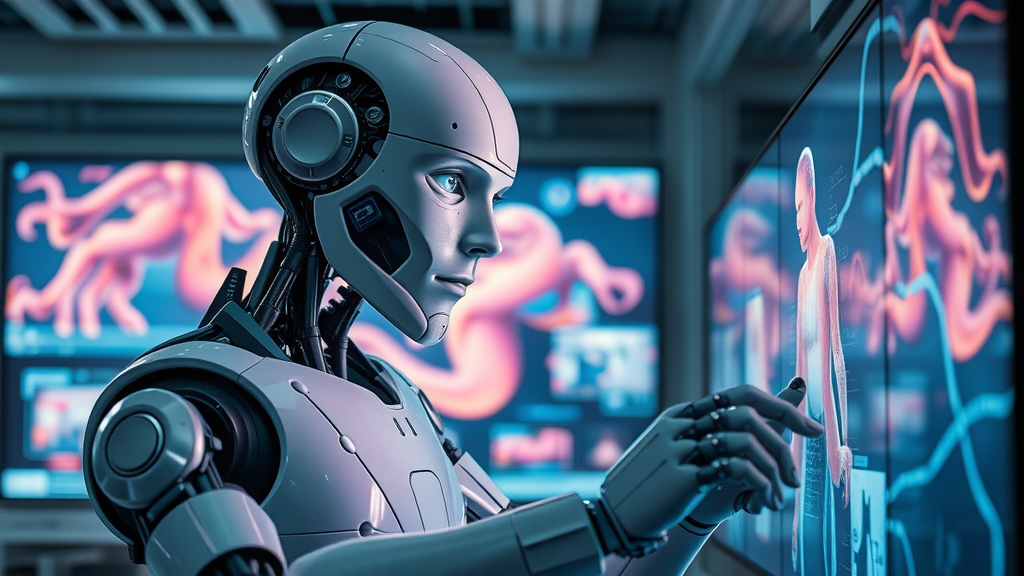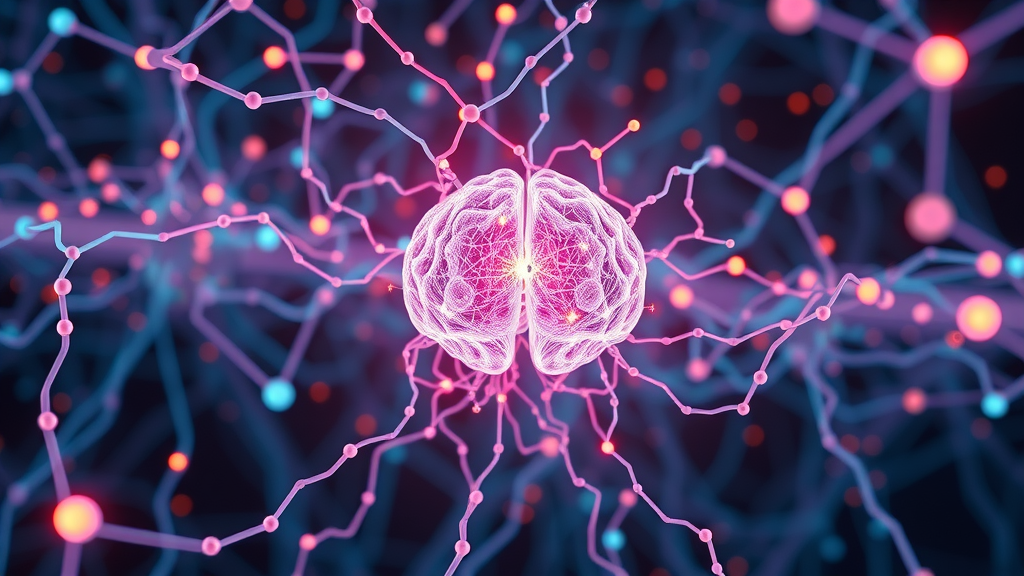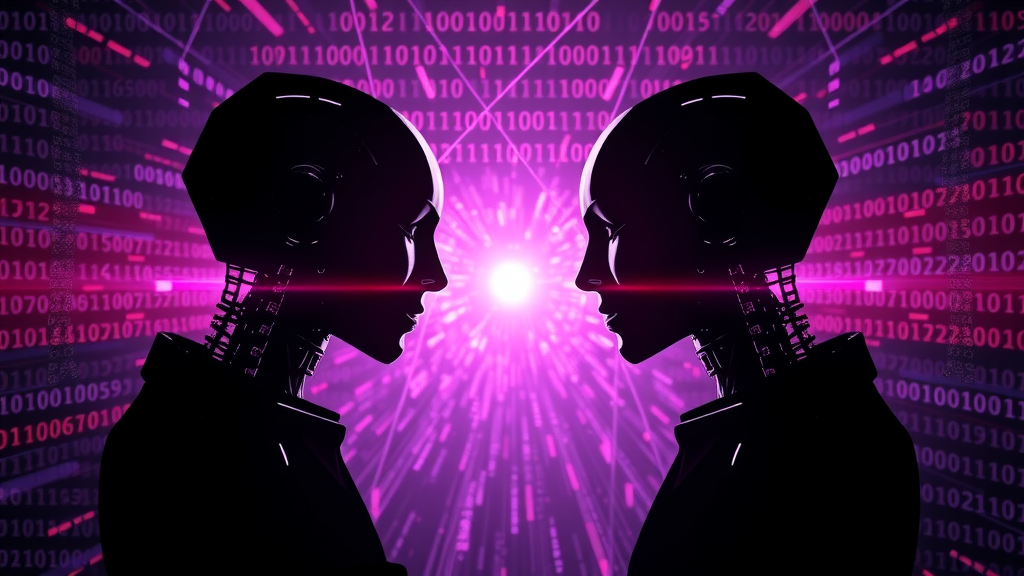"By 2025, 80% of creative digital content will be generated by AI models—unlocking innovation on a scale never before seen."

Imagine a world where nearly everything you see, read, or hear is generated by artificial intelligence . That world isn’t fictional—it’s taking shape right now. Generative AI models are accelerating creativity, shattering traditional boundaries, and enabling artists, designers, and storytellers to realize ideas faster and more vividly than ever before. This article reveals exactly how gen AI is flipping the script across art, design, music, business, and beyond—exploring key architectures, real-world applications, and what the future holds in the age of machine-powered innovation.
- How generative AI models are changing art, design, and storytelling
- Breakthroughs in neural networks and language model technology
- The critical role of learning models in innovation
- Real-world examples of generative AI fueling today's creative revolution
Unveiling Generative AI Models: Redefining Creativity in the Age of Artificial Intelligence
Generative AI models are at the forefront of a creative renaissance, transforming how we produce images, music, and stories. By learning from vast amounts of input data , these ai models harness the principles of neural networks and machine learning to generate content that often feels indistinguishable from material created by humans. For example, graphic designers use generative adversarial networks to create stunning digital art in seconds, while writers tap into language models for instant story ideas or character backstories. As we peel back the curtain on these innovations, one thing is clear: generative AI is not just a technological advancement—it is an artificial intelligence -driven partner in creativity, radically expanding what’s possible for individuals and industries alike.
Consider the impact already unfolding: neural networks can now generate hyper-realistic images, simulate human voices, or compose soundtracks to match any mood or genre. In fields like film, advertising, and gaming, generative models offer the power to scale content production, personalize consumer experiences, and automate design processes that once demanded extensive manual effort. The result is a surge in both the quantity and quality of creative outputs, enabling more voices to be heard and more visions to be realized in the digital age.
Understanding the Fundamentals: What Are Generative AI Models and How Do They Power Artificial Intelligence?

Defining Generative AI: Advancements in Machine Learning and AI Models
At their core, generative AI models are advanced algorithms that learn to create new, original content by identifying patterns in training data . Unlike traditional AI, which might only classify or recognize objects, a generative model learns how to synthesize fresh content—everything from text and images to music and code. This shift is made possible through innovations in machine learning models , where deep learning enables systems to mimic human-like creativity.
While early ai models focused on automating repetitive tasks or processing rules, today’s generative ai goes further, producing vivid works by navigating latent space —an abstract digital terrain representing potential variations of data. The latest generative models are found everywhere, from enabling synthetic portraits to building virtual environments for augmented reality, embodying the next evolutionary leap for artificial intelligence.
The Building Blocks: From Neural Networks to Advanced Learning Models
The architecture of generative AI models is grounded in neural networks —mathematical frameworks inspired by the human brain. Within these, layers of artificial neurons process and transform data, uncovering complex relationships as the model “learns” through exposure to diverse information. Over time, these deep learning systems evolve into sophisticated learning models capable of generating remarkably authentic outputs.
Breakthroughs such as transformers and autoregressive language models have propelled generative AI into the mainstream. By stacking more layers, leveraging attention mechanisms, and employing vast computational resources, modern ai models now excel at tasks ranging from text generation —the engine behind chatbots like ChatGPT—to high-resolution image generation as seen with DALL·E and Stable Diffusion. This rapidly advancing foundation continues to unlock new creative possibilities.

Key Differences: Generative Model vs. Traditional Discriminative AI Models
A vital distinction separates generative ai models from their discriminative peers. While traditional discriminative models focus on classifying or labeling input data—such as distinguishing between a cat and a dog in a photo— generative models aim to create entirely new instances of data based on what they’ve learned. In other words, a generative model doesn’t just recognize an image of a cat; it can produce a new, realistic image of a cat that never existed before.
This capability is fundamental to applications like synthetic image generation , deepfake video creation, AI-powered content writing, and more. As industries adopt these technologies, understanding the function and potential of each type becomes critical for choosing the right ai model for a task—whether it’s data analysis, prediction, or creative output.
| Aspect | Generative AI Models | Traditional Discriminative AI Models |
|---|---|---|
| Main Function | Can synthesize new data/outputs (e.g., images, text, audio) | Classifies or labels existing data (e.g., spam vs. not spam) |
| Technology | GANs, VAEs, Autoregressive Language Models, Diffusion Models | Logistic Regression, Support Vector Machines, CNNs, etc. |
| Key Use Cases | Image/text generation, simulation, synthetic data creation | Recognition tasks, object detection, classification |
| Output Type | Generates new content | Provides predictions or labels |
Types of Generative AI Models: Exploring the Four Major Generative Model Architectures
1. Generative Adversarial Networks (GANs): The Power of Adversarial Networks
Generative Adversarial Networks (GANs) have set the gold standard for creative content synthesis. Introduced in 2014, GANs pit two neural networks —the generator and the discriminator—against each other in a virtual game. The generator crafts new data (like images or music), while the discriminator judges whether each sample is real or AI-generated. This adversarial process rapidly refines the generator’s abilities, enabling the creation of realistic images , modern deepfakes, and lifelike animations.
GANs have transformed fields like fashion (AI-generated clothing designs), marketing, and entertainment. By simulating massive datasets and mimicking human creativity, these generative adversarial networks are at the heart of today’s most powerful AI applications in image generation and beyond.
2. Variational Autoencoders (VAEs): Leveraging the Variational Autoencoder and Variational Auto Principles
Variational autoencoders (VAEs) are a class of generative models that translate input data into a compressed form, known as latent space , and then reconstruct it. Unlike GANs, VAEs focus on learning meaningful representations of data, making them ideal for tasks that require smooth changes in output—think subtle transitions in generated faces or handwriting styles.
VAEs power applications in digital art, handwriting synthesis, and scientific simulation. Their balance of creativity and mathematical rigor makes them key foundations for developing safe, interpretable ai models in healthcare, finance, and engineering.

3. Autoregressive Language Models: The Foundation of Modern AI Models
Autoregressive language models like GPT-3 and ChatGPT use a sequence-based approach, predicting one word at a time given previous terms. Fueled by enormous training data , these models excel at text generation , conversation, summarization, and more. Their architecture is built on transformer neural networks, allowing them to understand context, nuance, and intent in natural language .
These foundation models have transformed writing, coding, and communication, powering everything from virtual assistants to business process automation, and setting the stage for future advances in human-AI collaboration.
4. Diffusion Models: The Latest Breakthrough in Generative AI Models
Diffusion models represent the latest leap in generative ai model technology. Used in tools like Stable Diffusion , they create images by gradually transforming random noise into coherent visuals—an approach that delivers unprecedented levels of detail and artistry.
With superior control over generated content, diffusion models are setting new standards in art, design, and video, and are rapidly becoming the backbone of next-generation ai models in creative industries.
| Model Type | Key Features | Main Applications |
|---|---|---|
| GANs | Adversarial training; realistic image generation | Art, fashion, video, synthetic image creation |
| VAEs | Latent space encoding; smooth data interpolation | Handwriting, animation, scientific simulation |
| Autoregressive Language Models | Sequence modeling; natural language processing | Text/chatbots, writing, coding assistance |
| Diffusion Models | Noise-to-image transformation; fine-grained control | Digital art, photo editing, video, design |
The Role of Neural Networks and Deep Learning in Generative AI Models
How Neural Networks Enable Generative AI and Creative Image Generation
Neural networks are the “brains” behind generative ai models . By mimicking the structure of biological brains, these networks process massive data collections to extract features, patterns, and even artistic styles. During training , a neural net learns how to generate entirely new outputs by combining information from the training dataset in novel combinations.
In image generation , for instance, neural networks can synthesize realistic images of people, objects, or landscapes that don’t exist in reality. This capability powers everything from AI-generated advertising imagery to digital avatars, highlighting the flexibility and creative potential of ai models grounded in neural network principles.

Deep Learning Model Innovations in Generative Models
Recent years have seen explosive progress in deep learning methods, especially in generative ai models . Innovations such as self-supervised learning, transformer architectures, and multi-modal models (which combine text, image, audio, and video) have expanded what ai models can achieve. These advancements boost not just output quality, but also control—allowing creators to shape generated content with unprecedented precision.
As foundation models become more accessible and user-friendly, even non-technologists can leverage ai models for rapid prototyping, experimental design, or personalized content generation. These trends signal a democratization of creativity powered by artificial intelligence.
Real-World Impact: From Language Models to Artistic Image Generation and Beyond
Generative AI is making waves far beyond art studios and tech labs. Media organizations use language models for news summarization, scriptwriting, and content localization. In healthcare, generative ai synthesizes medical images to train diagnostic systems or simulate rare conditions. Businesses deploy generative models for automated marketing campaigns, product mockups, or game development.
The ultimate impact? Generative ai models are reducing creative bottlenecks, fueling innovation at scale, and unlocking new forms of collaboration between humans and machines across virtually every industry.
Transforming Creative Industries with Generative AI Models
Revolutionizing Image Generation, Text, and Audio Creation
Generative ai models are redefining traditional boundaries across all creative media. In the visual arts, cutting-edge ai models empower photographers, designers, and illustrators to produce high-quality realistic images in mere seconds. In the world of writing, language models generate poetry, scripts, blog posts, and advertising copy.
Sound engineers and composers utilize generative models to craft custom audio tracks, design ambient soundscapes, or remix classic songs into fresh arrangements. By automating repetitive creative tasks, these ai models free creators to focus on ideation, experimentation, and expressive storytelling.

Gen AI in Visual Arts: AI Model-Powered Design, Illustration, and Animation
In visual arts, generative ai models serve as catalysts for innovation. Artists leverage platforms like Midjourney and DALL·E to generate mood boards, concept art, and even final compositions in their unique styles. Animators use ai models to choreograph lifelike character movements or auto-generate entire scenes, dramatically accelerating production timelines.
These transformative tools have made advanced design accessible to everyone—from budding illustrators to global advertising agencies—demonstrating that generative models are now essential partners in the modern creative process.
Generative AI Models in Music, Film, and Content Creation
In music and film, generative ai models unlock new genres and workflows. Musicians compose melodies and harmonies with the aid of AI, generating everything from pop hooks to experimental ambient scores. Filmmakers use AI-driven scripts and automated video edits, streamlining everything from storyboarding to post-production.
Brands and influencers turn to ai models for social media content, personalized marketing visuals, and virtual influencers. These rapidly-evolving applications showcase the power of generative AI to blend creativity with efficiency, making high-quality content production scalable and sustainable.
Generative Models in Business: Marketing, Game Design, Fashion, and More
Businesses increasingly view generative ai models as competitive advantages. Game designers employ them for rapid world-building and dynamic storytelling; marketers use AI-driven content generators to tailor campaigns to individual customer profiles. In fashion and retail, AI assists with virtual fitting rooms and trend forecasting, offering stylish, AI-generated apparel suggestions.
- AI-assisted writing tools
- Automated design generators
- Synthetic image and video creation
- Personalized marketing campaign generation
The net effect: a seismic shift in how brands, startups, and creative agencies approach design, communication, and consumer engagement—all powered by generative ai models .
"Generative AI enables creativity at a speed and scale once thought impossible, reimagining what’s possible for artists and businesses alike."
Core Mechanisms: How Generative AI Models Work—The Science Behind AI Creativity
The Role of Adversarial Networks in Advancing Generative AI
Adversarial networks, the backbone of GANs, are where the magic of competitive learning unfolds. By setting a generator AI against a discriminator AI, these adversarial networks force both sides to improve rapidly. The result: AI that can create scarily realistic faces, voices, and even deepfake videos.
This constant feedback loop not only leads to better generative ai models but also challenges researchers to grapple with ethical and creative questions about the nature of originality and authenticity in AI-generated content.

Unpacking Machine Learning Methods in Generative Model Development
Building a state-of-the-art generative ai model requires a careful fusion of machine learning strategies. These models start with massive training data , which they comb for patterns and styles. Techniques such as supervised, unsupervised, and reinforcement learning help generative models learn to not just recognize, but invent new forms and concepts.
The use of transformers, recurrent networks, and latent variable models allows AI to capture context, style, and structure in ways that were unthinkable just a decade ago. Continuous improvements in deep learning architectures mean that generative AI is evolving rapidly, making it ever more adept at fulfilling creative tasks.
From Data to Imagination: The Process of Training an AI Model
Training a generative ai model is a multi-step journey, turning raw data into imaginative, high-quality outputs. It begins with collecting and cleaning large, diverse datasets to minimize bias and noise. Then, the data is fed into the neural network for training, where it learns patterns and relationships. Once the model reaches a satisfactory performance level, it is validated with new data to ensure accuracy, and then deployed for real-world use.
| Stage | Description |
|---|---|
| Collect | Gather large, representative training datasets |
| Clean | Remove errors, biases, and irrelevancies from the data |
| Train | Expose the model to data, iteratively improve accuracy and creativity |
| Validate | Test the model on new data to ensure robust results |
| Deploy | Launch the model for public or commercial use |
Key Examples of Generative AI Models and Real-World Applications
Spotlight on Leading Generative AI Models: DALL-E, Midjourney, ChatGPT, Stable Diffusion
Some of the world’s most famous generative ai models now lead innovation in both art and industry. DALL-E famously converts written prompts into rich, original images; Midjourney excels in evocative art generation for brands and creatives. ChatGPT demonstrates the conversational strength of language models , while Stable Diffusion makes detailed customization and high-resolution image generation accessible to all.
Each model exploits different AI architectures—from transformers to diffusion models —offering unique benefits and use cases. The impact? Entire creative workflows now run on AI, making high-quality, scalable output the norm in publishing, advertising, and entertainment.

Case Studies: Generative AI Model Success in Art, Medicine, and Business
In healthcare, ai models synthesize rare medical images to help doctors diagnose and treat complex diseases. Art studios use generative ai for brainstorming, rapid prototyping, and automatic rendering of assets for clients. In enterprise, generative models support market analysis, automate content creation, and deliver personalized recommendations that enhance consumer experiences.
One notable case: a team of radiologists used a generative model to augment scarce diagnostic images, improving training for new doctors and speeding up real-time medical response. In creative advertising, brands leverage AI-powered copywriting and design, cutting timelines from weeks to minutes while elevating creative possibilities.

How Language Models Are Shaping the Future of Work
Language models like GPT-4 are redefining productivity in offices and creative industries alike. These ai models automate emails, summarize meetings, translate languages in real time, and provide instant research briefings. In fields like legal, education, and journalism, generative ai is taking on research, correspondence, and editing—increasing efficiency while allowing professionals to focus on higher-order thinking and strategy.
As more organizations embrace foundation models for core processes, the line between human ingenuity and AI-driven automation continues to blur, promising smarter, faster, and more personalized work experiences for all.
FAQs About Generative AI Models, Neural Networks, and Artificial Intelligence
-
What is a generative AI model?
A generative AI model is an artificial intelligence system designed to produce new, original data—such as images, text, or audio—by learning from patterns in existing datasets. These models “imagine” what could exist based on their training, expanding creative potential across industries. -
How does an AI model generate creative outputs?
An AI model generates creative outputs by processing input data through layers of neural networks, identifying features, and synthesizing new content in response to prompts or objectives provided by users. -
What are the differences between generative and adversarial networks?
Generative networks focus on creating new outputs, while adversarial networks involve competition between two AI models—a generator and a discriminator—to refine results and create more realistic outputs. -
Are all neural networks generative by design?
No, not all neural networks are generative. Some are designed for classification (discriminative), others for regression, and only specific architectures—like GANs, VAEs, and certain autoencoders—are inherently generative.
People Also Ask: Generative AI Models
What are AI generative models?
AI generative models are artificial intelligence models trained to create new content from learned data patterns. By leveraging complex neural networks , they generate anything from realistic photos to unique melodies and natural-sounding speech, powering creative innovation in many domains.
What are examples of gen AI models?
Examples include DALL-E and Stable Diffusion for image generation, ChatGPT and GPT-4 for language generation, and Jukebox for music creation. These ai models demonstrate the diverse capabilities of generative AI across art, writing, and media.
What are the four types of generative AI?
The four primary types are Generative Adversarial Networks (GANs) , Variational Autoencoders (VAEs) , Autoregressive Language Models , and Diffusion Models . Each offers unique ways of learning from and generating new data.
What are the 4 major models of AI?
The four major models are generally categorized as reactive machines, limited memory, theory of mind, and self-aware AI. Within generative AI, the focus is on architectures like GANs, VAEs, autoregressive, and diffusion models.
Challenges and Ethics: Considerations for Using Generative AI Models
Bias, Security, and Reliability in Generative Model Outputs
Even the most advanced generative ai models can inherit or amplify bias present in their training data . Security risks arise when models inadvertently leak sensitive information or are used for malicious deepfake campaigns. Ensuring reliable, fair, and unbiased outputs is a critical area for ongoing AI research.
Responsible innovation demands transparency about how models are trained, what data is used, and how potential harm is mitigated. Developers must implement robust evaluation frameworks, tracking performance and bias over time to maintain public trust.
Ethical Considerations: Addressing Creativity, Copyright, and Fair Use with AI Models
The rise of generative ai raises thorny questions about copyright, ownership, and fair use—as AI-generated content often builds on existing works. Establishing who owns the rights to AI-generated art, music, or text remains a legal gray area.
Ethical deployment means respecting creators, disclosing AI involvement in content creation, and ensuring AI does not infringe on the intellectual property or dignity of others. These issues will only grow in importance as generative content proliferates across platforms and industries.

AI Model Governance: Ensuring Responsible Deployment of Generative AI
Effective governance is critical for deploying generative ai models responsibly. Organizations need clear protocols to manage data bias, guarantee transparency, and ensure AI aligns with ethical guidelines and regulatory standards. Industry bodies, governments, and creators must collaborate on policies for safe and fair use.
- Managing data bias and transparency
- Implementing ethical frameworks for AI
- Ensuring compliance with industry regulations
As innovation accelerates, robust governance frameworks will be key to realizing the benefits of artificial intelligence without sacrificing public trust or social responsibility.
"Responsible innovation ensures generative AI models empower creativity without compromising ethics or integrity."
Future Perspectives: The Evolving Frontier of Generative AI Models and Artificial Intelligence
Predictions: Next-Generation AI Models and the Impact of Quantum Computing
Looking ahead, experts predict that next-generation generative ai models will become even more powerful with the advent of quantum computing, processing vast amounts of data in seconds and unlocking previously unimaginable creative outputs. Quantum-enhanced AI could simulate entire virtual worlds, instantaneously generate lifelike avatars, or discover new forms of art and music.
This convergence signals an era where AI will not just assist but co-create—expanding artistic horizons, scientific discovery, and human potential.
Expanding Generative Models: From Art to Autonomous Scientific Discovery
Future generative models will move beyond art and communication, actively participating in scientific discovery. AI could autonomously hypothesize, simulate experiments, and suggest breakthroughs in fields ranging from biomedicine to energy research, accelerating innovation.
This paradigm shift will make artificial intelligence both a creative and scientific partner, heralding a new age of symbiotic innovation between humans and machines.
How Generative AI Models Will Shape the Future of Creativity and Business
With generative ai models woven into everyday tools, creative and business processes are set for profound transformation. Teams will rapidly prototype ideas, personalize customer experiences on an individual level, and collaborate with virtual experts. As barriers fall and innovation accelerates, the only limit will be human imagination—amplified by artificial intelligence .
Summary of Key Takeaways: Generative AI Models and Their Transformational Power
- Generative AI models fuel unprecedented creative innovation
- AI model architectures are rapidly evolving, increasing impact across industries
- Responsible implementation is critical to maximize benefits and minimize harms
- Future generations of AI hold even greater promise for creativity and intelligence

Ready to Harness Generative AI Models? Accelerate Your Creative Potential Today
Whether you’re an artist, entrepreneur, educator, or innovator, embracing generative ai models means unlocking a universe of new possibilities. Start experimenting with today’s tools, invest in AI-powered platforms, and join the revolution—your next breakthrough is only an idea away.
 Add Row
Add Row  Add
Add 




Write A Comment